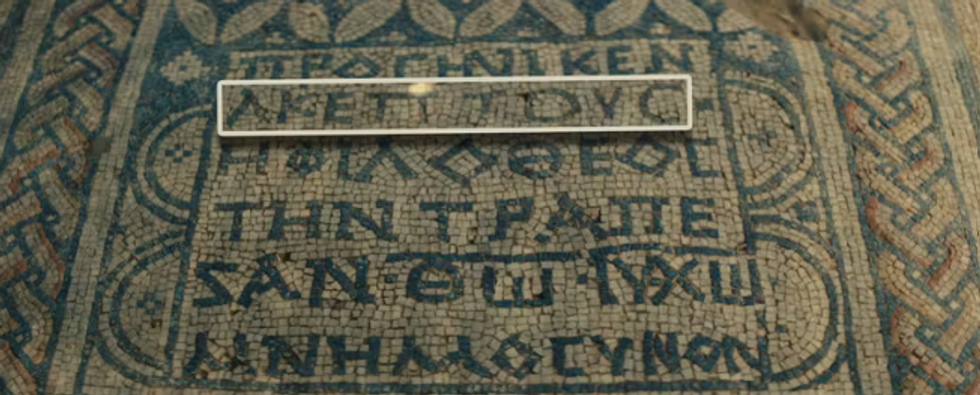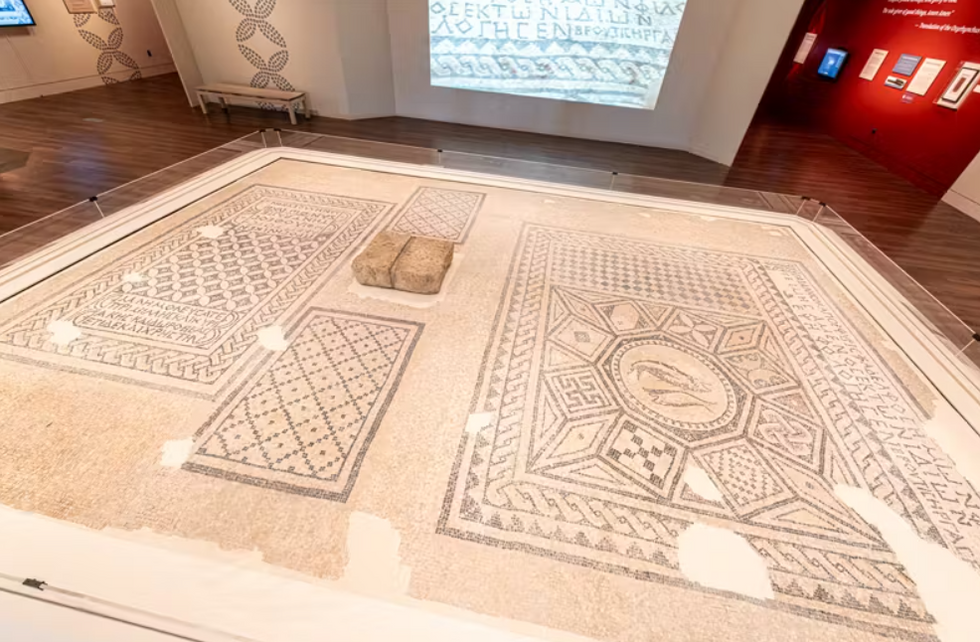The earliest inscription of “Jesus is God” has been discovered beneath the floor of a prison in Israel.
The engraving, which is said to be 1,800 years old, was found by an inmate at the Megiddo prison.
The mosaic floor, which had been hidden under the prison since its discovery in 2005, is now on display in a museum in Washington, DC until 2025.
The 581-square-foot mosaic features the ancient Greek writing: “The god-loving Akeptous has offered the table to God Jesus Christ as a memorial.”

The inscription reads: “The god-loving Akeptous has offered the table to God Jesus Christ as a memorial”
Museum of the Bible Website
It also features images of fish, which experts say may reference the story of Luke 9:16 where Jesus multiplied two fish to feed 5,000 people.
The CEO of the Museum of the Bible in Washington hailed the mosaic as “the greatest discovery since the Dead Sea Scrolls.”
At the opening of the exhibition, he said: “We truly are among the first people to ever see this, to experience what almost 2,000 years ago was put together by a man named Brutius, the incredible craftsman who laid the flooring here.”
Other experts at the museum said this was: “The most important archaeological discovery for understanding the early Christian church.”
Curator Alegre Savariego added: “The mosaic presents groundbreaking physical evidence of the practices and beliefs of early Christians, including the first archaeological instance of the phrase, ‘God Jesus Christ.”
The Megiddo Mosaic was first found in 2005 in the Jezreel Valley during the expansion of a maximum-security prison. The valley is thought to be the location where the final battle of the Biblical Armageddon will occur.
The excavation, carried out by archeologists from the Israel Antiquities Authority, took four years to complete.
The mosaic includes the name of the Roman officer who commissioned it, which reads: “Gaianus, a Roman officer, having sought honour, from his own money, has made the mosaic.”

The mosaic features images of fish
Museum of the Bible Website
Archeologists also found a Roman camp nearby.
These discoveries led researchers to believe they could serve as proof of coexistence between Romans and Christians during the Roman occupation of Judea.
The Israel Antiquities Authority received criticism for allowing the historical piece to be displayed at the Washington museum.
Since its opening in 2017, the museum has faced controversy. It was forced to return thousands of artefacts that were looted from Iraq, and admitted that several of its Dead Sea Scroll fragments were modern forgeries.

The mosaic was discovered in 2005
Museum of the Bible Website
An archeologist at Bar-Ilan University in Ramat Gan, Israel said: ‘While some of the founders and actions of the museum are questionable, and the museum clearly has a very ideological agenda, I don’t think a ‘purist’ agenda is very helpful here.”
He added that as long as everything was carried out according to law, he saw no problem.
The tile will return to Israel after the exhibition finishes, and will be put on permanent display at the site of discovery.
The Megiddo inmates will be relocated to a different prison.